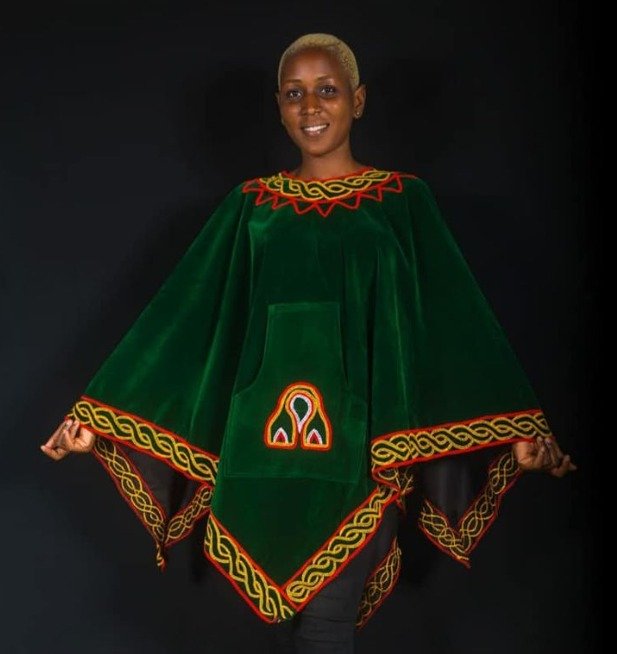Rainbow Black Fashion: The Toghu of Cameroon
Africa is a place of diversity, encompassing numerous tribes with distinct cultural approaches. Clothing style and material choice are distinct facets of culture that vary across tribes. This results in a very diverse and colourful mixture of cultures all over the continent. While many of these cultures are still being studied and sought after, many are already quite well-known worldwide. One such is the Toghu (or Atoghu) of the Bamilekes.
Originating from the highlands in the Northwestern part of Cameroon, the Toghu is, like many other outfits that find their source in Africa, a colourful piece of clothing that can be styled in several ways. It is worn by men and women across the country, highlighting a versatility quite unmatched by other traditional outfits native to the region.
A Royal and Colourful Past
In times past, the Toghu was (and is still) the traditional wear of the Bamilekes, who are based in the Grassfield Region of Cameroon. The Bamilekes wore the Toghu only during ceremonies and rituals, and it was worn by royalty. However, as time passed and urbanization spread, other tribes in the country adopted the style of dressing as their own, and it quickly became a national attraction.
Many movies and events show celebrities, national heroes, and government officials ceremoniously attired in the Toghu. Unlike many other national outfits, however, the Toghu possesses an attribute of versatility, as it can be styled in virtually any way and still be recognised as is.
It should be noted that Toghu does not refer to the type of material but the style of clothing that originates from this region.
How It is Made
The Toghu is, at first glance, a colourful fabric featuring various colours, such as yellow, green, orange, and gold, although it may likely include more colours than the rainbow. However, it is made by adding these various colours via embroidery to a black velvety material. It is a combination of the black velvety material and the embroidery of many other materials, such as beads and cloths, that make the Toghu. Some designers and Toghu makers like to add colours in the form of shapes to the collar, sleeve ends, and garment edges. The garment itself would then display coloured diamond and star shapes.
Toghu fashion extends beyond clothing; it is also being adopted in bag design. Today, this material has become a door that opens Cameroon to the world, revealing the significance and beauty of Toghu.
A Rich and Diverse Present
Blair Underwood, an African American actor with roots in Cameroon, partnered with Cameroonian stylist Kibonen Nfi to wear the distinctive large tunic uniquely. Before then, the Cameroonian Olympic contingent appeared at the opening ceremony of the 2012 Summer Olympics fully garbed in different outfits of the Toghu, commemorating the tunic and showcasing their culture on an international platform. These actions have enabled many international fashion artists, designers, and couture companies to tap into their creativity and produce a range of designs inspired by the original Toghu design.
Generally, the Toghu is worn at celebratory events such as weddings, media events, traditional ceremonies, and festivals native to the country.
A Final Note
As much as the Toghu has spread its wings and become more than just a national identity and treasure, we owe it to the Bamilekes of Northwestern Cameroon, who have chosen to share such elegant beauty with the continent and the globe. If you meet a Cameroonian anywhere on your travels, remember the Toghu, for without them, we would never be blessed by the uniqueness, attractiveness, and sparkling wonder that it brings to the world whenever it is worn.


